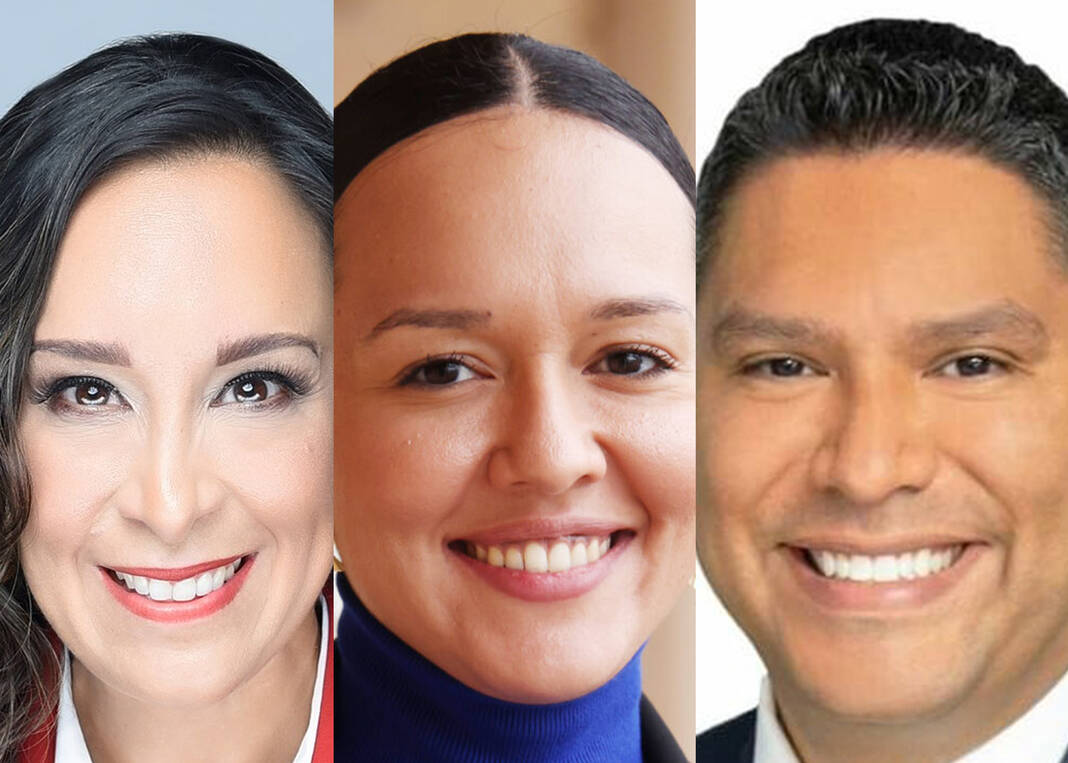 District 15 congressional candidates, from left: Republican Monica De La Cruz, Democrat Michelle Vallejo, Democrat Ruben Ramirez. (Courtesy)
District 15 congressional candidates, from left: Republican Monica De La Cruz, Democrat Michelle Vallejo, Democrat Ruben Ramirez. (Courtesy)
In 2018, U.S. Rep. Vicente Gonzalez, a Democrat from McAllen, handily beat his opponent in the November election to retain his District 15 congressional seat to represent what was then a Rio Grande Valley-centric district.
But much has changed since then.
Two years ago, a bitterly divided country elected President Joe Biden over Donald Trump, who has falsely claimed the Democrats stole the election from him.
That general election also saw a significant change in the traditionally blue Texas congressional District 15.
Monica De La Cruz, a Republican whose platform reflects Trump’s, nearly unseated Gonzalez at the time, who significantly outraised her in campaign contributions during that election.
Gonzalez, the incumbent, beat De La Cruz by approximately 3% of the vote in District 15 – an early indication of a red wave descending upon the Valley.
In that race, Gonzalez raised $1,257,881.45 and spent $907,999.77 to beat De La Cruz, who raised $422,613.21 and spent $416,551.57.
As has been the pattern over the last few years, another significant change has impacted District 15, which could ultimately flip it red: redistricting.
Now, District 15 has seven counties, including Hidalgo County, and stretches north and northeast of San Antonio and Bexar counties.
Gonzalez is also gone. His McAllen residence was shifted into neighboring District 34, where he is now seeking office.
This triggered a wide field of candidates seeking to replace him in District 15 and face off against De La Cruz in the general election.
Ultimately, the Democratic primary ended in a runoff between progressive Michelle Vallejo and moderate Ruben Ramirez on May 24.
That race was too close to call on election night with Vallejo holding a 23-point lead over Ramirez.
On Wednesday, Vallejo’s inched forward and she declared victory while Ramirez has not conceded as officials continue to count provisional and mail-in ballots.
But as the fog begins to lift in this race more than a week after the election, one point is clear: both Ramirez and Vallejo’s combined fundraising and spending do not even equal half of what De La Cruz has raised and spent thus far.
De La Cruz, who has been endorsed by Trump and has received national support, has raised a total of $2,313,272.73 and has spent $1,957,129.19, as of April 14, according to the Federal Elections Commission.
She currently has $363,649.27 in cash on-hand, according to her most recent report.
Combined, Vallejo and Ramirez have raised a total of $805,457.57 and spent $617,248.62 in their efforts to secure victory in the Democratic primary.
However, while Ramirez outraised Vallejo, who only joined the race in December, she appears headed to victory.
During his bid for the nomination, Ramirez raised a total of $414,395.15 to Vallejo’s $391,062.42.
He also spent more than Vallejo.
Ramirez’s campaign disbursed a total of $334,700.08 to Vallejo’s $282,548.54.
Vallejo, however, has more cash on-hand remaining with $108,513.88 to Ramirez’s $79,695.07.
These figures are as of May 4 and all of the candidates, including De La Cruz, are most certainly continuing to receive contributions from supporters be they individuals or political action committees.
The next filing deadline for De La Cruz and whoever ultimately secures the Democratic nomination is June 30.




